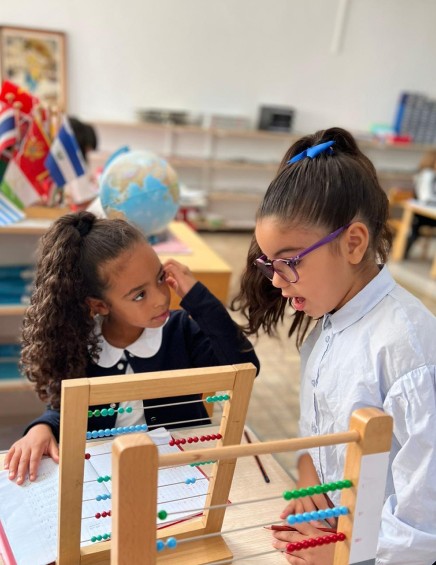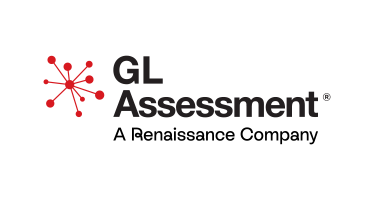Montessori materials at home: what to choose and how to use them :

Montessori materials at home sandpaper letters
Montessori materials at home help children build autonomy, coordination, and concentration through real, hands-on work. You do not need a full classroom or an advanced certificate. You need a prepared space, a few well-chosen tools, and consistent routines. This guide shows what to select, how to use it, and how to adapt everything to Moroccan homes.
Table of contents
-
What are Montessori materials?
-
Essentials for ages 1–3
-
Materials for ages 3–6
-
Materials for ages 6–12
-
Montessori DIY: low-cost ideas
-
How to use the materials at home
-
Parent voices in Morocco
-
Mistakes to avoid
-
Conclusion
1) What are Montessori materials?
1.1. Learning through hands-on manipulation
Unlike traditional worksheets, materials connect the senses to ideas. Children handle size, weight, sound, texture, and quantity first, then move toward abstraction.
1.2. Self-correcting design
Each tool includes a control of error. The child can spot and fix mistakes without waiting for adult judgment. This protects confidence and builds persistence.
1.3. Matched to development
Materials align with sensitive periods from toddlerhood to the elementary years. This is why Montessori materials at home should be chosen by age and readiness, not by trend.
2) Essentials for ages 1–3 (Practical life and sensorial)
2.1. Practical life
-
Learning tower: safe counter-height access for cooking and cleaning.
-
Transfer trays: water, rice, or beans with a small pitcher, cups, spoons.
-
Dressing frames: buttons, zippers, buckles for real self-care.
2.2. Sensorial
-
Color tablets or homemade color cards: naming and matching colors.
-
Inset cylinders: visual discrimination of size.
-
Treasure baskets: curated everyday objects in wood, metal, fabric.
How to present: sit at the child’s side, move slowly, use few words, and return everything to its place. With Montessori materials at home, the presentation is short; the practice is long.
3) Materials for ages 3–6 (Language, math, advanced sensorial)
3.1. Language
-
Sandpaper letters: trace and say sounds to link touch and phonetics.
-
Moveable alphabet: build words before handwriting matures.
3.2. Mathematics
-
Number rods: length shows quantity from 1 to 10.
-
Golden beads: concrete place value (units, tens, hundreds, thousands).
-
Seguin boards: teens and tens for composing numbers.
3.3. Sensorial
-
Pink Tower and Brown Stair: size and volume relationships.
-
Texture tablets: refine touch and vocabulary.
Tip: rotate 6–10 activities on a low shelf. Fewer choices raise focus. Label baskets in Arabic, French, or English to support trilingual families in Morocco.
4) Materials for ages 6–12 (Reasoning, culture, advanced math)
4.1. Mathematics and logic
-
Bead chains: skip counting and squares/cubes.
-
Stamp game: operations with place value control.
-
Binomial and trinomial cubes: visual patterns that foreshadow algebra.
4.2. Culture and science
-
Geography puzzles: continents, countries, capitals.
-
Timelines: history at a glance, from eras to family timelines.
-
Simple experiments: magnetism, water cycle, electricity basics.
Home adaptation: combine Montessori materials at home with fieldwork—market visits to weigh produce, map-reading on a family trip, or plant care on a balcony.
5) Montessori DIY: low-cost ideas
5.1. Why DIY
Imported materials can be costly. Everyday objects can mirror function if proportions and clarity are respected.
5.2. Easy builds
-
Sorting boxes from shoe boxes and jars.
-
Scent bottles from clean spice jars with cotton and extracts.
-
Clothespin activities for finger strength and sequencing.
-
Kitchen pitchers and spoons for real pouring and spooning work.
When making Montessori materials at home, keep parts child-sized, beautiful, and durable. Avoid noisy or flashing electronics that disrupt concentration.
6) How to use the materials at home
6.1. Prepare the environment
-
One low shelf the child can reach.
-
Calm, uncluttered space.
-
Limited quantity out at once.
6.2. Offer freedom with limits
Adults suggest, do not impose. The child chooses and repeats. The limit is respect: for people, materials, and time.
6.3. Observe more, intervene less
Watch posture, grip, sequence, and frustration points. Adjust difficulty quietly. With Montessori materials at home, observation guides the next presentation.
Internal links:
Authority resources (dofollow): Association Montessori Internationale (AMI) • UNESCO child-centered learning
7) Parent voices in Morocco
-
Nadia, Marrakech: “We bought a learning tower and sandpaper letters. My 2-year-old helps in the kitchen and speaks more.”
-
Karim, Rabat: “DIY sensorial boxes kept my daughter exploring for long stretches. Cost was minimal and results were real.”
These stories match typical outcomes when Montessori materials at home are presented simply and used daily.
8) Mistakes to avoid
-
Buying too much at once or choosing tools beyond the child’s stage.
-
Forcing an activity after the child loses interest.
-
Replacing real manipulation with screens and loud toys.
-
Ignoring order and beauty, which are core to concentration.
Conclusion
Montessori materials at home are not luxury toys. They are precise tools for building independence, confidence, and a deep love of learning. Whether you invest in official sets or craft DIY versions, focus on a prepared space, clear presentations, and respectful freedom. With small, consistent steps, your home becomes a calm workshop where your child can grow.






